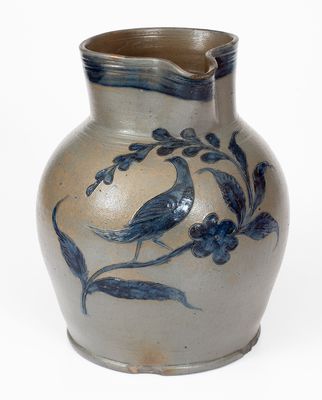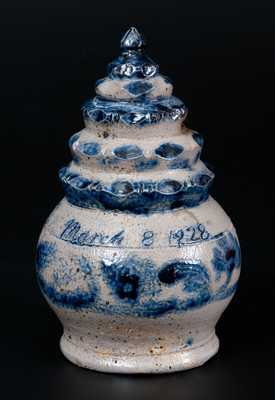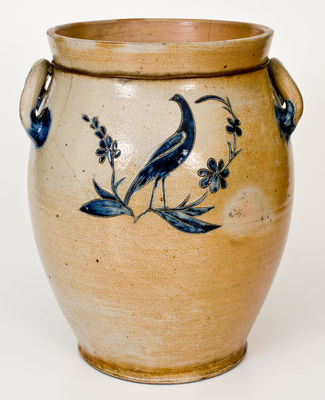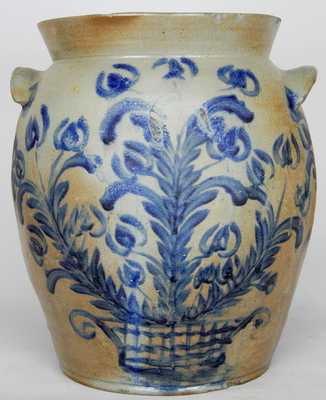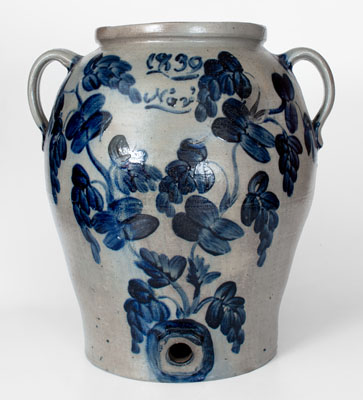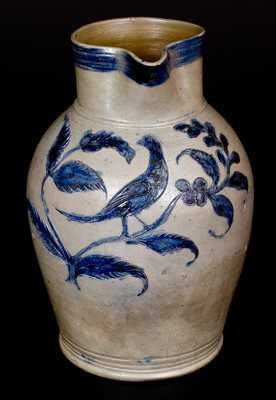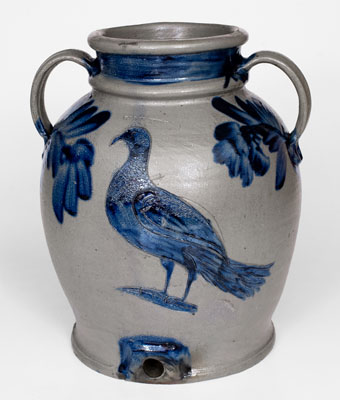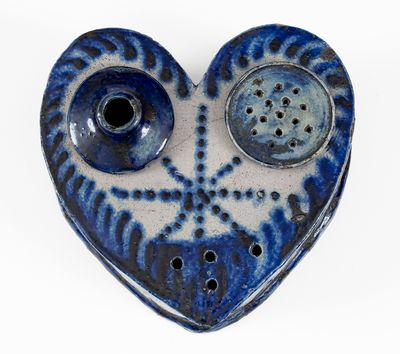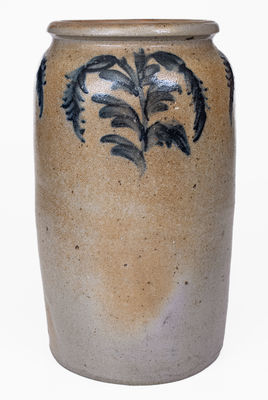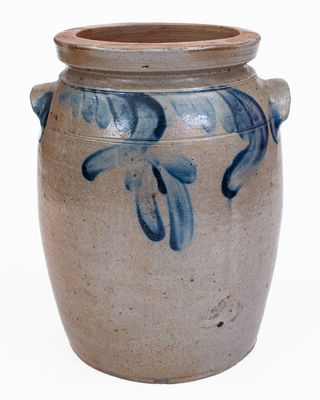Fine Stoneware Pitcher with Cobalt Foliate Decoration, Baltimore, MD origin, possibly Hugh Robbins Marshall, circa 1815-1822, ovoid pitcher with footed base, tooled shoulder, and short, inwardly-tapering collar with tooled rim, brush-decorated around the upper body with graduated garlands of leaves. Cobalt band to rim and highlights to handle terminals. Exhibiting a New-York-style form possibly inspired by the Remmeys' arrival in Baltimore in 1812, this pitcher features decoration that connects it with the work of William Morgan and Thomas Amoss of Baltimore's Pitt Street, circa 1820. However, certain aspects of the pitcher's form, salt-glazed surface, and color suggest a different maker, possibly Hugh Robbins Marshall. Marshall learned the potter's trade in Baltimore from Thomas Morgan and briefly conducted his own pottery on Liberty Street circa 1822. During this time, it is likely that Marshall was operating at the shop of William Amoss, while Amoss was in Richmond, Virginia tending to the estate of his deceased brother, the Baltimore and Richmond potter, Thomas Amoss. Of interest is the fact that the design on this pitcher closely relates to motifs found on Amoss's Richmond work. Marshall was later associated with Elisha Parr's pottery on Pitt Street and later worked in Fredericksburg, Lynchburg, and Rockbridge County, Virginia. This pitcher's color, slightly darker than the refined clay used by Morgan and Morgan and Amoss, and its dark-brown interior are more consistent with Marshall's Baltimore products than any other Baltimore maker we can find. Regardless of maker, this pitcher's refined craftsmanship and early period of production distinguish as an excellent example of Baltimore's burgeoning cobalt-decorated stoneware craft. Literature: For a related jar by Marshall, see Kille, "Distinguishing Marks and Flowering Designs: Baltimore's Utilitarian Stoneware Industry," Ceramics in America, p. 98, fig. 7. Very nice condition. A glazed-over spout chip. Two small base chips. A shallow 3/4" flake to underside along bottom edge. Some exfoliation to interior base. H 13 1/2".









